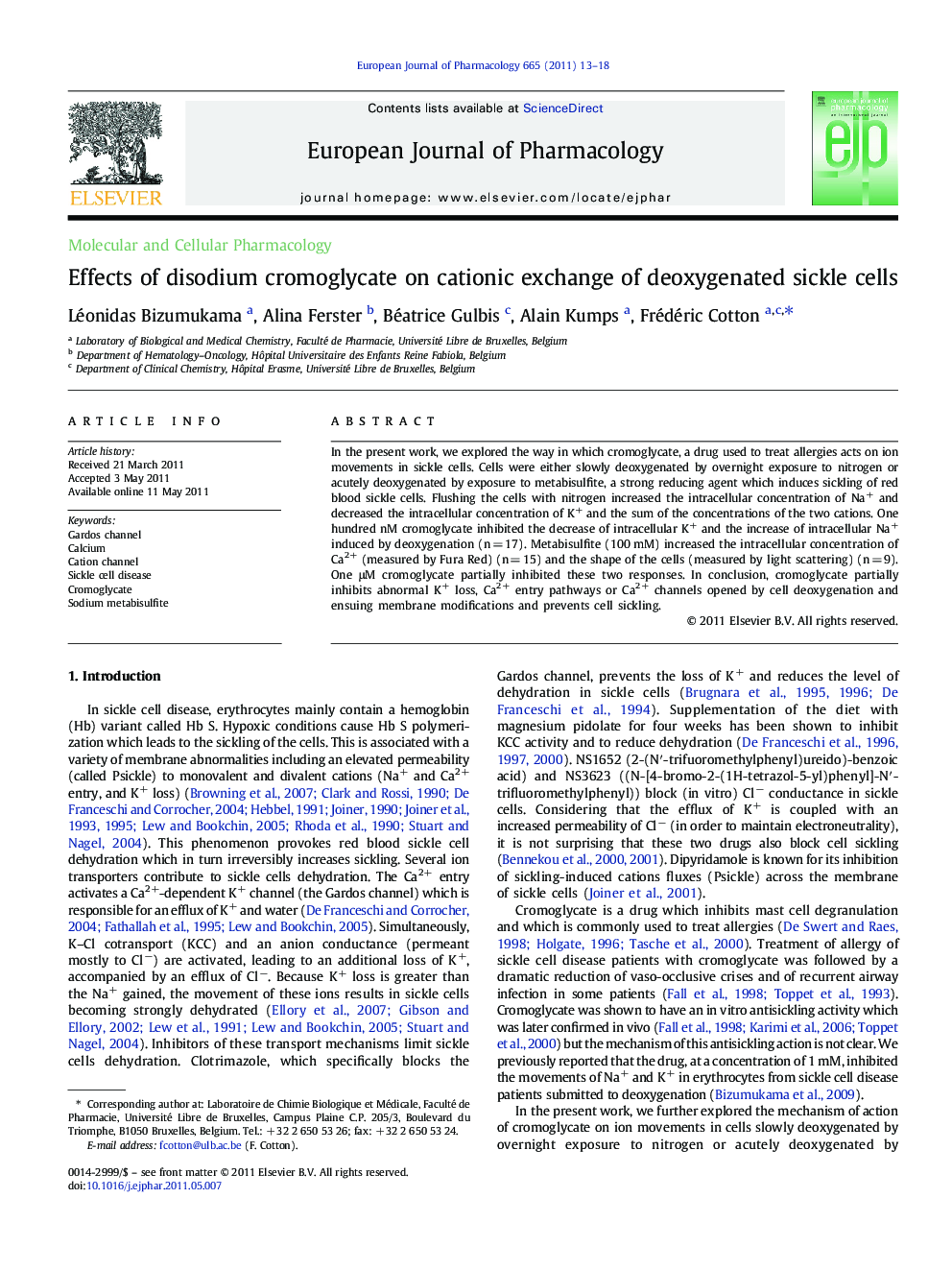| Article ID | Journal | Published Year | Pages | File Type |
|---|---|---|---|---|
| 2532658 | European Journal of Pharmacology | 2011 | 6 Pages |
In the present work, we explored the way in which cromoglycate, a drug used to treat allergies acts on ion movements in sickle cells. Cells were either slowly deoxygenated by overnight exposure to nitrogen or acutely deoxygenated by exposure to metabisulfite, a strong reducing agent which induces sickling of red blood sickle cells. Flushing the cells with nitrogen increased the intracellular concentration of Na+ and decreased the intracellular concentration of K+ and the sum of the concentrations of the two cations. One hundred nM cromoglycate inhibited the decrease of intracellular K+ and the increase of intracellular Na+ induced by deoxygenation (n = 17). Metabisulfite (100 mM) increased the intracellular concentration of Ca2+ (measured by Fura Red) (n = 15) and the shape of the cells (measured by light scattering) (n = 9). One μM cromoglycate partially inhibited these two responses. In conclusion, cromoglycate partially inhibits abnormal K+ loss, Ca2+ entry pathways or Ca2+ channels opened by cell deoxygenation and ensuing membrane modifications and prevents cell sickling.
